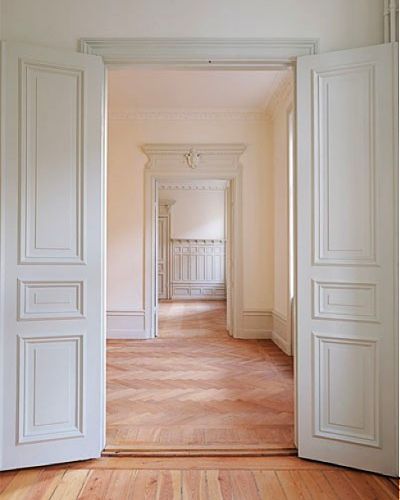5 Things Designers Want You To Know Before You Hire Them

Working with an Interior Designer can be a totally new territory for the first-timers. How does the whole process work? How do you know that the collaboration is going to be a success? I hope today's post will bring some clarity into Designer-Client relationship.

Working with an Interior Designer can be a totally new territory for the first-timers. How does the whole process work? How do you know that the collaboration is going to be a success? I hope today's post will bring some clarity into Designer-Client relationship.
1. Communication Is Key.
First step in the process of designing a space specifically for you and your family is to fill out a Lifestyle Questionnaire. Sharing personal information (about the way you and your family live, about your habits, which side of the bed you sleep on, etc.) may not always be easy. So make sure the designer you are going to work with is the one who makes you comfortable, who you can trust. And remember, we ask all those private questions in order to make your home as comfortable for you as possible, not to pass judgement.
Letting your interior designer know of your everyday routines, your likes and dislikes, your dreams and preferences means that the result will be great. Don't be afraid to discuss budget as well - the designer will be happy to guide you on ways to save in some areas so you can splurge on something wonderful somewhere else.
2. A Home For You.
Your home should reflect who you are - your hobbies, passions, direction in life. It is a personal space that evolves over time just like you do. If you know exactly what you want your home to be - great! But sometimes it is hard for people to put their design preferences into words. To help in the process, you may start collecting a file of things that you like, photographs of furniture or interiors that inspire you, magazine pages, even swatches of fabric or color. Or you may have a favorite souvenir or an object. All this will give your designer a place to start in creating a home just for you.

3. Designer and Client Work As A Team.
Needless to say that trust and respect are key factors in any successful relationship, especially so in a designer-client collaboration. Working as a team means exchanging ideas, finding a solution to a dilemma, being open and honest with each other, be willing to try new things. Trust the designer for the professional they are and your project will give you greater results than you have imagined.
Keep in mind that your team consists of you and your interior designer - not a neighbor, a co-worker or a mother-in-law. Do not let other people's opinion interfere with the process. This is YOUR house - what works for somebody else might not fit your lifestyle.
4. Staying Within A Budget.
Interior design can be costly. Often more costly than people would like to think. That is why it is important to define a budget as early as possible - it will save a lot of time to be clear on the subject. If you expect perfection and top of the quality, then share that with the designer. If the budget can only extend to slipcovers for your existing furniture, let the designer know this before they set off in a search for a brand new furniture.
Sometimes not all our aspirations can be covered by our budget. Be sure to discuss your priorities with the designer so that your budget will cover the most important areas.
Also, designers are willing to be flexible in how they work with you considering your current economic situation. For example, instead of redecorating the whole house at once, it might be better to break a big project into manageable parts and do one room at a time.
5. Hire A Designer Before Building Or Remodeling.
More often than not interior designers are contacted either during the final stage of building a new home or after the house is complete. And more often than not, when the designer takes over decorating the house, it turns out that the lighting fixtures (already installed) do not match the style and mood of a room or are wrong in scale. Or, had an interior designer been contacted sooner, the built-in could have been installed while the building crew was still working on the project.
If you think you might need help decorating your home, my advice would be to contact an interior designer BEFORE the construction or remodeling of a home begins (or at least at the early phase of a project), so that the right wall color could be chosen, the appropriate lighting fixture installed and medicine cabinet hung at the correct height. Yes, contractors are always willing to offer their advice, but by wearing an interior designer's hat they often do their clients an ill turn. An interior designer is a profession and rightfully so. By seeing the whole picture a designer will offer expertise and knowledge which will save you time and money in the long run.
I hope this was helpful. In one of the next posts I am going to talk about how designers work and what you can expect from a designer.

